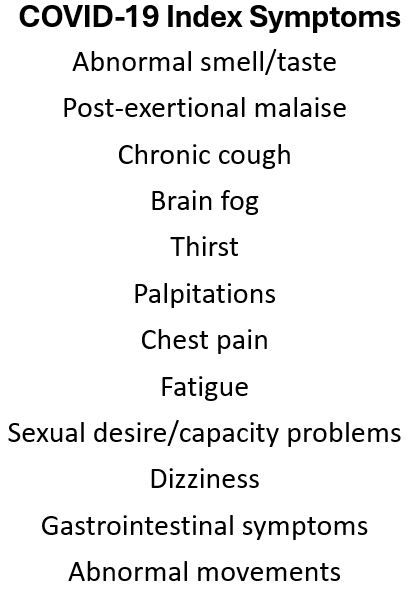Routine Laboratory Study Results Not Clinically Useful for Diagnosing Long COVID: New Analysis
Of the 25 routine lab tests studied, none proved clinically useful for diagnosing COVID-19, even among participants with a high long COVID symptom burden.
Among more than 2 dozen routine laboratory tests, none were not found clinically useful to identify prior SARS-CoV-2 infection or to make a diagnosis of long COVID, according to a new analysis of the National Institute’s of Health RECOVER-Adult cohort.1 The study included 10,094 participants of whom 8746 had been infected with SARS-CoV-2 and 1348 who had no prior infection. The 25 laboratory tests included those for electrolyte levels; liver, renal, and thyroid function; hematology and lipid panes; and biomarkers of inflammation.1
©THALERNGSAK_MONGKOLSIN/Shutterstock.com

The investigators, led by Kristine Erlandson, MD, MSc, of the University of Colorado, Anschutz Medical Campus, in Aurora, and colleagues, did find several differences between individuals with and without prior COVID-19 infection but described them “of modest significance” in the paper published in the Annals of Internal Medicine.1
Specifically, among participants with prior infection they reported lower mean platelet counts (265.9 × 109 cells/L vs 275.2 × 109 cells/L) and higher HbA1c levels (5.58% vs 5.46%) and urinary albumin/creatinine ratios (uACR; 81.9 vs 43.0 mg/g).
HbA1c. The difference in mean HbA1c levels was all but cancelled out in a sensitivity analysis that excluded study participants with pre-existing diabetes, the results then showing levels of 5.40% and 5.37% for those with vs without prior COVID-19 infection.
uACR. The modest elevations in uACR, Erlandson and colleagues suggested, could reflect greater comorbidity burden among participants with prior SARS-CoV-2 infection or be a consequence of more severe initial infection. They noted, too, that their findings are in line with what other investigators have observed in people with acute COVID-19 infection and afterward.
Platelets. With regard to the observed decrease in platelet count, the investigators pointed out that the detectable differences “were likely of minimal clinical relevance,” with most values falling “well within the clinically normal range.” They also suggested that the lower platelet count could indicate processes such as platelet destruction or bone marrow suppression, which are often seen after other viral infections. Nonetheless, they reiterated that platelet count is not a “reliable biomarker” for long COVID.
Symptom index does not discriminate
The study’s secondary analysis focused on previously infected individuals only to discern whether there were any differences in laboratory values between those who developed long COVID and those who did not. The research team used a long COVID index developed to provide a research definition of long COVID that identified 12 symptoms, each assigned a point value, that best discriminated between people with and without prior infection, according to the study. An index total of 12 or more was an “optimal threshold” above which a diagnosis of long COVID was likely.

Erlandson and team compared study participants with an index score of zero to those with the higher scores and found no meaningful differences in any of the 25 laboratory tests. They did note that an index score of zero does not rule out long COVID symptoms or the syndrome itself, but that person would be unlikely to have it.
The RECOVER initiative, funded by the NIH, was launched in 2021 and through observational and health record studies, clinical trials, and studies of pathophysiology is focused on understanding and finding treatments for long COVID. The RECOVER-Adult cohort recruited adults from 83 sites across the US between October 2021 and October 2023, creating a final cohort of 10,094, according to the study. The mean age of the group was 47 years and 72% were women; more than half were White (59%), 17% were Hispanic or Latino, and 14% were Black. Just under two-thirds (62%) reported vaccination against COVID-19. Using the long COVID symptom index, the researchers found 1880 had an index 12 or more and 3351 an index of zero.
At study enrollment, participants completed a physical examination, survey, and provided blood for laboratory studies. Lab values were obtained at 5 more visits over the 2-year study; the study’s outcome was the laboratory measures obtained 6 months after the date of infection.
Although many potential models of long COVID pathogenesis have been proposed, eg, immune dysregulation, viral persistence, organ injury, and others, no set of clinical biomarkers of the condition have been validated. Myriad studies have evaluated candidate biomarker categories, eg, inflammatory, coagulation, and hematologic. Erlandson et al said that, overall, study outcomes have been limited by small size, limited follow-up, and/or lack of appropriate controls.
“Our findings suggest that even highly symptomatic PASC may have no clinically observable objective findings on routine laboratory testing,” the authors wrote. “Understanding the basic biological underpinnings of persistent symptoms after SARS-CoV-2 infection will likely require a rigorous focus on investigations beyond routine clinical laboratory studies (for example, transcriptomics, proteomics, metabolomics) to identify novel biomarkers.”
Writing in an editorial accompanying the study, Annukka Antar, MD, PhD, and Paul Auwaerter, MD, from the Johns Hopkins University School of Medicine in Baltimore, concluded:
"Clinicians are left to continue doing what we have done in the past: order tests to rule out alternative explanations rather than to diagnose long COVID. We must remember long COVID in our differential diagnoses for symptoms or conditions with no apparent cause. Importantly, acknowledging symptoms with empathy and creating a symptom management plan provides a basis for trust and hope amidst uncertainty."